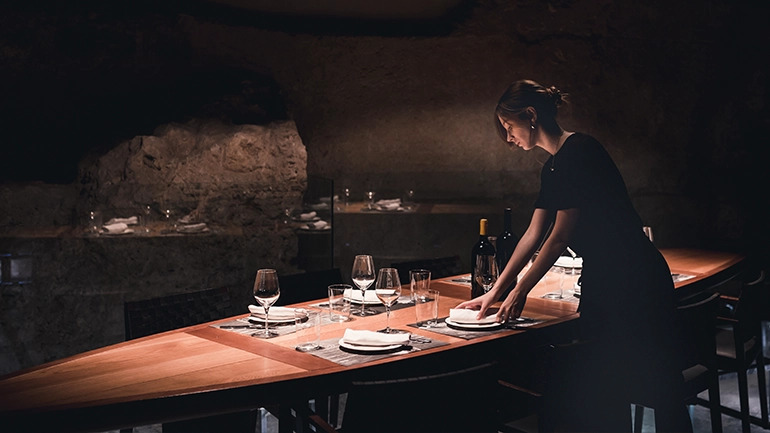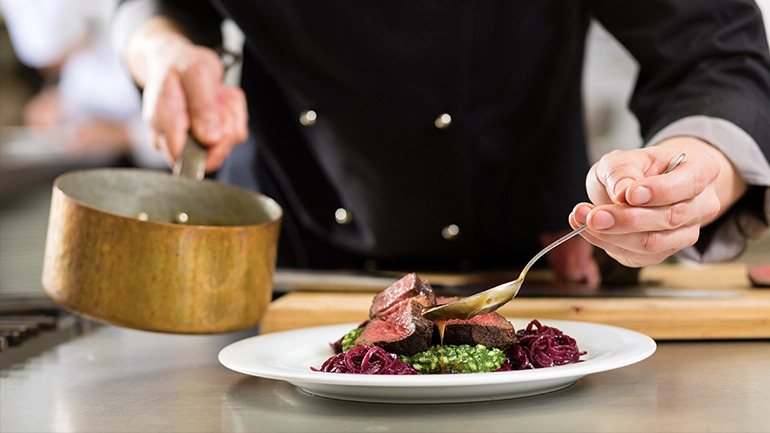To the culinary world and those with a passion for hospitality, the coveted Michelin Star is much more than a simple rating – it’s a badge of honor, a testament to relentless dedication, and a recognition of culinary mastery. As a coveted beacon of achievement in the realm of gastronomy, Michelin Stars have the power to redefine restaurants, boost careers, and cultivate a culture of excellence that reverberates far beyond the kitchen.
Not unlike the pursuit of a world championship in sports or a distinguished award in the arts, earning a Michelin Star has become a dream that drives countless culinary artists and hospitality professionals around the globe. It’s about pushing boundaries, overcoming the mundane, and continuously seeking perfection. The quest for this recognition is a journey filled with creativity, dedication, and an unwavering commitment to delivering unforgettable experiences.
But, what does it take to reach this esteemed benchmark in hospitality? How does one navigate the path toward such a prestigious accolade? In this article, we aim to lift the lid on the Michelin Star system’s inner workings and shed light on how it impacts every member of a hospitality team.
Whether you are an aspiring chef, a hotel management student, an intern, or even a seasoned hospitality veteran, understanding the Michelin Star’s elusive charm can serve as a pivotal stepping-stone in your career growth. Let’s embark on this enlightening journey together.
The Genesis of the Michelin Guide
In the world of fine dining and culinary arts, few symbols carry as much weight and prestige as the Michelin Star. However, it’s fascinating to trace back its humble beginnings to a travel guidebook, a tool designed to help motorists find their way around France and discover good food along their journey.
The Michelin Guide was first published in 1900 by the Michelin Tyre Company, initially intended to boost the demand for cars, and thus, for car tires. However, its potential to influence the culinary landscape was realized much later.
By 1926, the guide had begun to award stars to fine dining establishments, and by 1931, the hierarchy of one, two, and three stars was introduced. Today, the Michelin Guide has evolved into an international benchmark for dining quality and is considered a pinnacle of culinary achievement. However, it’s important to remember that this system, recognized globally for its culinary excellence, had its genesis in a humble travel guidebook.

Decoding the Michelin Star System
The Michelin Star system has an aura of mystique around it – an allure built on its precise and often elusive standards. At its core, the system revolves around three levels of distinction: one, two, and three stars. A single star signals ‘a very good restaurant’, a two-star ranking indicates ‘excellent cooking that is worth a detour’, while the coveted three-star rating suggests ‘exceptional cuisine that is worth a special journey.
However, these stars aren’t just about the food on the plate. Earning them involves a comprehensive evaluation of the entire dining experience. It’s about the chef’s passion and relentless pursuit of perfection, the artistry and innovation in every dish, the harmony of flavors, the quality of ingredients, and the technical skill and consistency of the culinary experience.
The Journey to a Michelin Star
Receiving a Michelin Star is a multi-layered process, defined by a stringent inspection carried out by anonymous Michelin Guide reviewers, also known as ‘inspectors’. These inspectors evaluate restaurants on a set of criteria – the quality of the products, the mastery of cooking techniques, the harmony of flavors, the personality of the chef in their cuisine, the value for money, and the consistency between visits.
Perhaps the most intriguing part of this process is its anonymity. The inspections are carried out discreetly to ensure an unbiased evaluation of the dining experience, just as any other guest would perceive it. Achieving and maintaining a Michelin Star status is a team effort.
It’s about every staff member, from the head chef to the servers and the kitchen porters, playing their part to deliver a seamless, unforgettable experience for each diner. As such, the journey to a Michelin Star isn’t a destination, but a continuous commitment to excellence, a passion that translates into every detail of a restaurant’s operation.
Related: Michelin Star’s Gastronomic Odyssey in America
What Michelin Stars Mean for Individuals in Hospitality
The allure of a Michelin Star isn’t confined to the prestigious standing it bestows upon a restaurant. It also echoes profoundly in the lives of those who inhabit the kitchen and breathe life into culinary creations. Every chef who has been graced with this honor narrates a tale of metamorphosis, where their careers take flight in the luminescence of the star.
Working in a Michelin-starred restaurant is a unique crucible, forging stronger skills, resilience, and an indomitable commitment to the craft. It engenders an environment that not just encourages but demands excellence. For hospitality professionals, this is a chance to immerse themselves in a culture that can mold them into the best version of themselves, enhancing their professional reputation and opening doors to numerous opportunities.
Overcoming Challenges: Pressure, Expectations, and Criticisms
A Michelin Star is not attained without trials and tribulations. The journey is steeped in expectations and pressure that could rival the weight of the star itself. The pursuit of perfection, the striving for consistency, and the desire to outdo oneself – they can all bear heavily on those who dare to chase the star.
But it’s in these moments of challenge that greatness is often born. Critics have had their say about the Michelin system, some pointing to an alleged preference for luxury dining experiences.
But a deeper understanding reveals that the Michelin Guide is a celebration of culinary art in all its forms, where the focus is less on the style of the restaurant and more on the quality of the cuisine and service. It’s not about conforming to a prescribed standard but elevating oneself to the epitome of excellence.

Chasing the Stars: A Career with Michelin Ambitions
For culinary enthusiasts and hospitality professionals dreaming of a Michelin Star, inspiring stories of legendary Indian chefs abroad offer valuable insights. These tales of success provide motivation and guidance for achieving such prestigious recognition. Know that the journey is as challenging as it is rewarding. It’s an uphill journey that demands dedication, persistence, and the pursuit of perfection. But rest assured, the rewards are unrivaled.
Embarking on this journey, you’re not alone. With organizations like HRC International, you’re in good hands. We offer training programs and opportunities designed to help you take on challenges and elevate your skills.
So, for those who dream of making a mark in the hospitality industry, let the Michelin Stars be your guiding light but never your end goal. The heart of every Michelin Star is an individual who dared to dream, strive, and accomplish. This journey’s essence is the real reward.
